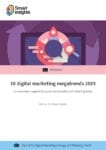A review of some of the most interesting and important insights from this year’s report
Mary Meeker’s annual internet trends report has become one of the most eagerly anticipated moments of the year (well, for internet/ data nerds at least!). Previously of Kleiner Perkins Caufield & Byers and now Bond Capital, Mary Meeker has been presenting key trends, statistics and predictions on the internet since 1995.
I personally find the report fascinating. It gives me the inspiration and ammunition to back new ideas, explore new concepts and take a step back and look at the world from a broader perspective. Meeker’s reports cover a wide range of macro (economy, immigration) and micro (e-commerce, digital advertising) topics that deliver a very comprehensive view of the digital world in which we live.
This year’s report provided another insightful overview, covering a huge range of areas as part of a whopping 333-page slide deck.

I would highly recommend digesting the whole report yourself to pick out elements that resonate most with you and your business. But for those looking for some key highlights, I’ve picked out a selection of insights that I thought were particularly interesting and what they mean for marketers:
Global internet use is at >50% penetration but is slowing
Internet use has reached record numbers, with nearly four billion global internet users:

It appears we’re reaching saturation point as growth (at least in the West) is slowing – something echoed throughout the report. Growth slowed to 6%, primarily because so many people are already online. One of the main drivers of previous years’ growth has been the proliferation of smartphone sales, which is now declining because a large proportion of people already have one and do not feel the need to upgrade as frequently due to improved technology.

Technology dominates global business
Seven out of ten of the world’s most valuable companies by market capitalization are tech companies.

This highlights the continued dominance of (US) big tech and their influence on the world, from e-commerce (Amazon), advertising (Google, Facebook) to hardware (Apple, Microsoft). With Apple following Amazon’s lead and pivoting towards services, we could see further disruption in new markets, including TV, financial services and gaming.
E-commerce growth is stable – but slowing
Although the report takes a predominantly US perspective, we can see these trends as a barometer for other countries in the West, including the UK. The report highlights that whilst e-commerce in the US continued to grow, this was at a slower rate (up 12.1% in Q4 2018 vs c.17% in Q4 2017), suggesting a potential saturation point.

However, this doesn’t mean that there isn’t still room to grow. It’s not possible to maintain consistently high levels of growth over the long-term and therefore smart, savvy brands with a strong online value proposition (e.g. Boohoo, Etsy) there are opportunities to stand out and grab market share.
Online advertising accelerated, driven by strong creative, better targeting and high relevance
Internet advertising spend in the US was up 22% vs 21% in 2018, with a growing contribution from mobile.

As expected, the majority of the spend is concentrated on Facebook and Google, although it’s interesting to note the increased growth from other platforms, such as Amazon, Snapchat and Twitter.
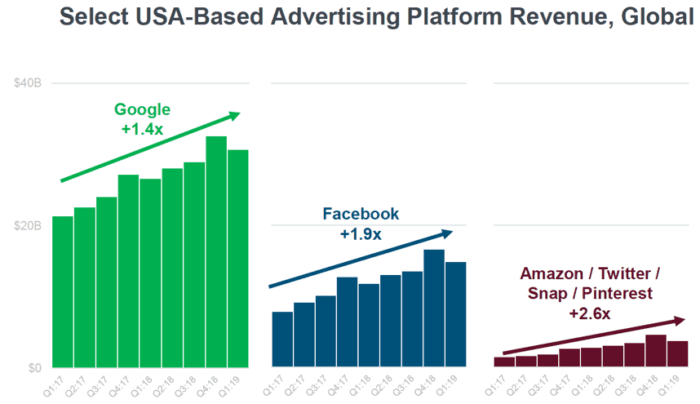
One of the reasons I’m so interested in digital marketing is the level of innovation and change that’s constantly taking place and the report identifies four areas that are driving the growth of digital ad spend.

Brands and marketers are looking for options to reach their target audiences and digital gives them opportunities to customize their audiences, personalize experiences and provide new and interesting ways to buy online. It’s clear that mobile continues to be the default format and that Facebook and Google are still the primary channels to reach audiences. However, the emergence of established, and up-and-coming channels (e.g. Amazon’s move into advertising), may provide increasingly new and interesting ways to advertise online.
Internet usage has seen solid growth, driven by investment and innovation
Digital media usage in the US has accelerated, up 7% from the previous year, with Americans spending 6.3 hours a day in 2018.
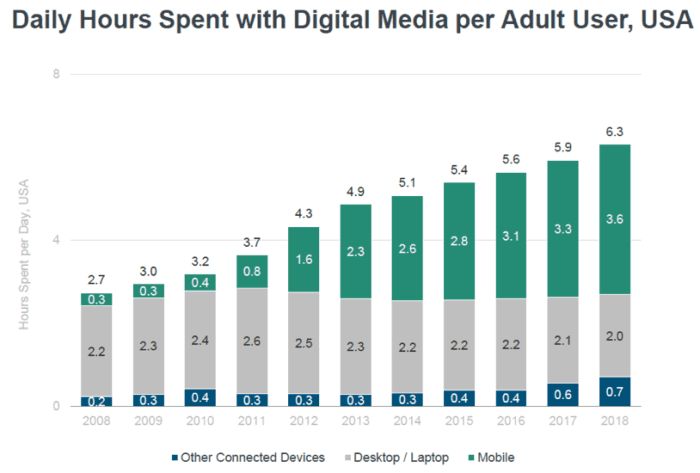
The majority of growth is coming from mobile and other connected devices, while time spent on desktop/ laptop computers has declined. Again, this is a clear sign of where advertisers should be focusing their attention and the formats they should be used to engage and reach audiences.
One of the key takeaways from our review of Thinkbox’s latest research was that TV viewing is stable in the UK, giving advertisers an ideal way to reach target audiences at scale. This is also the case in the US although digital is seeing very strong growth at the expense of TV and in the latter part of 2018 more time was spent on mobile than on TV.


As people continue to change their viewing habits, platforms have improved their online video propositions. YouTube and Instagram have been seeing the strongest gains.
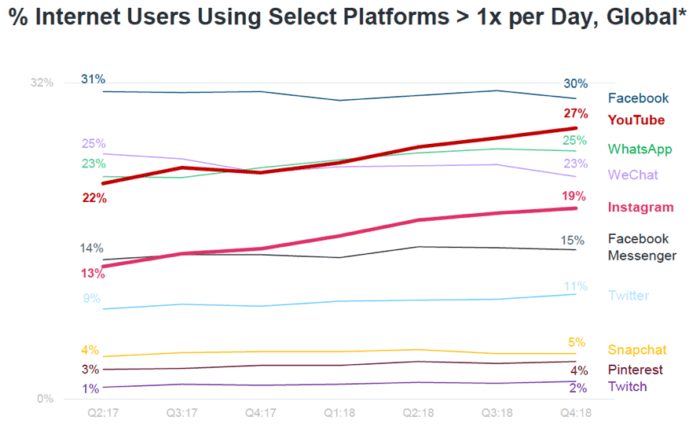
As the trend to (short-form) online video continues, it will be interesting to see if this translates to the UK and how marketers adapt.
People are telling stories via edited images and video
A lot of the success of platforms such as Facebook, Instagram and YouTube is related to their skill at leveraging people’s innate desire to share stories using images. Imagery is the oldest form of ‘transportable communication’ and in the last 20 years, we’ve seen the foundations laid to support effective image creation.

As a result of these foundations, we’ve seen continued improvement in functionality across several different platforms.
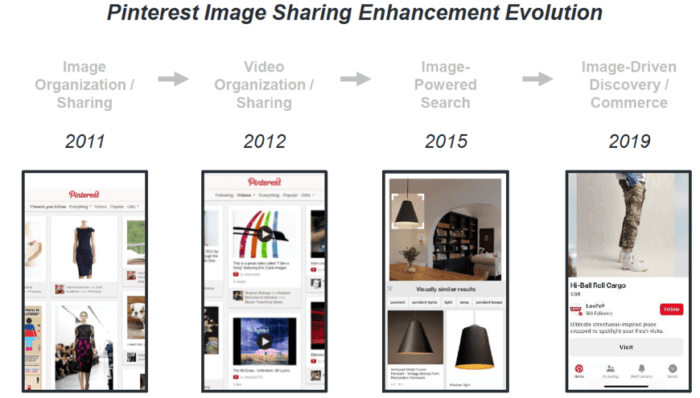

This quote from Kevin Systrom, Instagram’s co-founder, sums up the power of imagery and the way digital platforms are exploiting this very well.
“People have always been visual – our brains are wired for images. Writing was a hack, a detour. Pictorial languages are how we all started to communicate – we are coming full circle. We are reverting to what is most natural. Instagram has always been a communication platform, not an image sharing tool. Instagram challenges the notion that beauty comes in a traditional, artsy form… it’s not about beauty, it’s about the story you tell. Instagram’s inherent feedback systems help users continuously improve communication skills”
Other notable trends to watch out for
As mentioned at the top of the post, at 330 slides there is a lot of information to consume, and some trends will be more relevant to some than others. So here are some other notable trends and insights from the Bond Capital report:
- Interactive gaming is becoming an increasingly relevant way to communicate. Innovation is strong across many platforms and real-time and social in nearly all ways
- Freemium business models have enabled companies (Spotify, Zoom, Dropbox, etc.) to rapidly grow their customer bases and convert a good proportion to paid subscriptions
- Data and artificial intelligence, when used properly, can improve customer satisfaction. A survey of retail customers shows that people prefer brands that can provide personalized offers and recommendations
Conclusion
There is a huge amount of data and insight to take from Bond Capital’s Internet Trends report. There are many insights that I would like to have highlighted in this post but I will leave this to you to find out for yourself! Although the report takes a predominantly US focus, the trends provide very useful context for marketers operating in any industry or sector.
It’s interesting to learn that we’re starting to reach a saturation point in terms of internet usage, indicating that most target audiences are likely to be online. However, if we are to reach these audiences we need to use the right channels and formats to achieve cut-through in a very competitive space if we decide to advertise online, images and video, with a short-form focus, appear to be one of the most effective formats. TV remains dominant but digital and mobile is gaining ground, demonstrating the shifting trends and preferences across different audience demographics.
The internet’s constant change means that there will be many more internet trends reports in the future. Although not all the trends and forecasts will play out exactly as predicted (e.g. voice, VR and AR have yet to have the impact predicted in previous reports), it’s useful to understand the broader macro trends and some of the more specific micro-changes so we can factor these into our plans and strategies.
